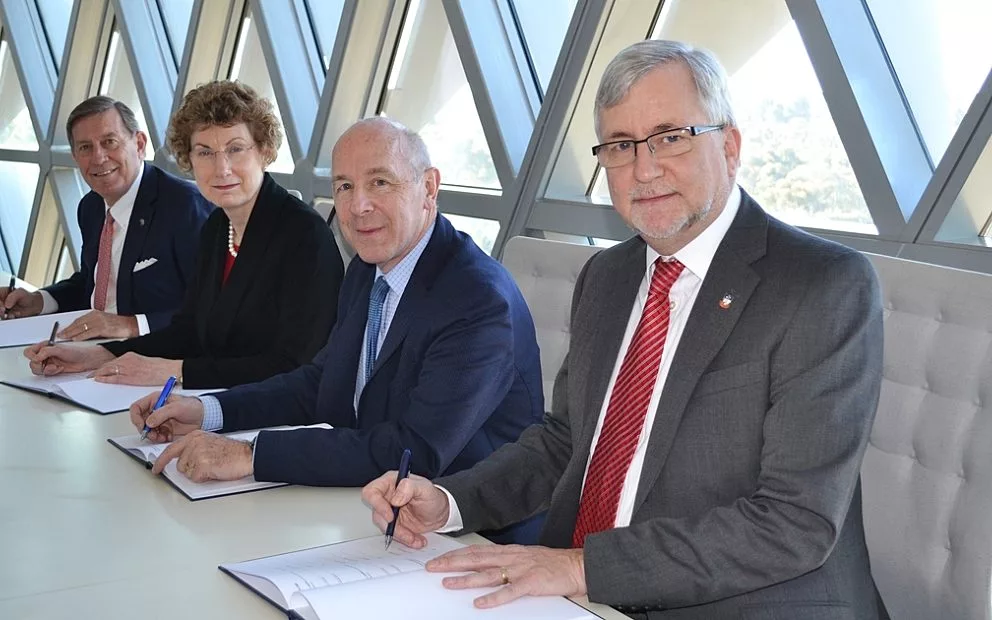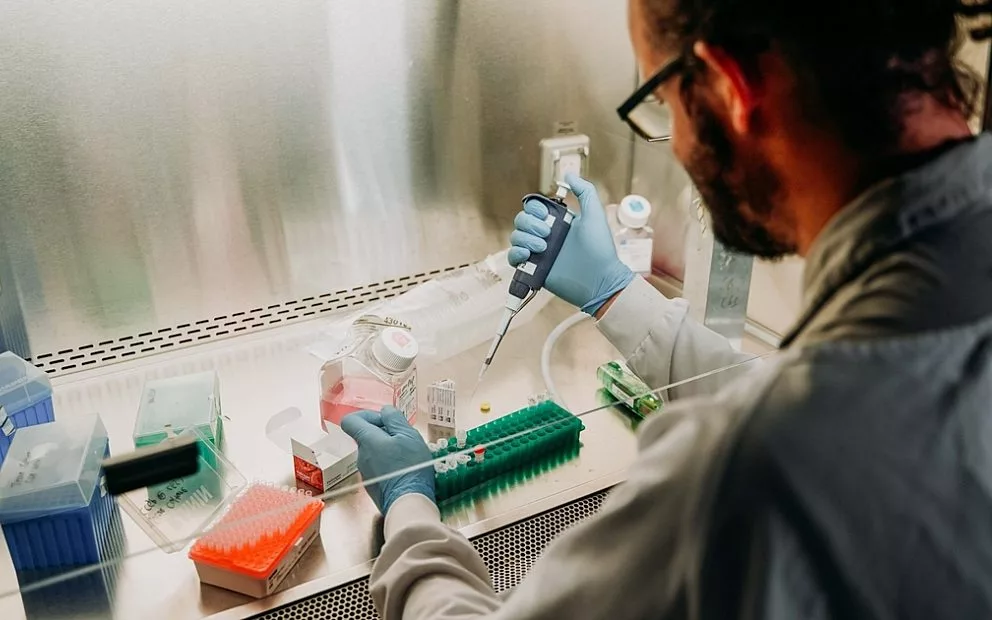The four pillars of Adelaide’s BioMed City are living the ancient motto of “unity makes strength”.
The South Australian Health and Medical Research Institute (SAHMRI), The University of Adelaide, The University of South Australia and the Central Adelaide Local Health Network (CALHN) have formalised their partnership with the signing of the Adelaide BioMed City Collaboration Agreement.
SAHMRI Board Chairman Mr Raymond Spencer says the Agreement further strengthens existing bonds between the signatories.
“Since 2013 we’ve seen the BioMed City precinct grow, and the organisations that live there work together to achieve things that just wouldn’t be possible operating in isolation,” Mr Spencer said.
“It’s so much easier for our researchers and health care professionals to share knowledge and information when they work in the same space, but more importantly we’re able to get so much more bang for our buck through shared use of some of the extremely expensive equipment that’s needed for world-class research and health care.
“The formalisation of our partnership means the precinct will be overseen by a General Manager and a properly constituted Adelaide BioMed City board, as well as associated advisory and development committees.”
The agreement also enshrines a vision, mission and goal for Adelaide BioMed City.
“Our vision is simple – health and wealth through collaboration,” Mr Spencer said.
“We have set ourselves the mission of being a globally recognised collaboration, leading in research, education, clinical care and population health.
“And our goal is to build impact, leverage investment and inform evidence-based health care and innovation in ways that could not be achieved separately.”
Mr Spencer says there’s reason to be excited about the future of Adelaide BioMed City, with construction of the SAHMRI 2 building to begin next year.
“SAHMRI 2 will only enhance the already robust reputation Adelaide enjoys when it comes to attracting leading researchers from around the world,” he said.
“The building will also house the southern hemisphere’s first proton therapy machine, which will be a game-changer for both research and patient treatment.
“Proton therapy is a more targeted treatment for cancer patients that reduces damage to surrounding tissue, which is particularly important near vital parts of the body like the eyes, brain and spinal cord.
“Currently, Australians who need proton therapy treatment have to travel overseas, at great cost to themselves or the government.”
The $3.6 billion Adelaide BioMed City, located at the western end of North Terrace, is one of the largest health science clusters in the southern hemisphere. The South Australian Health and Medical Research Institute, The University of Adelaide’s Health and Medical Sciences facility, The University of South Australia’s Health Innovations site and the new Royal Adelaide Hospital utilise their proximity to collaborate on research, education, clinical care and business development.
Image: SAHMRI Chairman Mr Raymond Spencer, CALHN CEO Ms Jenny Richter, The University of South Australia Cancer Research Institute Director Professor Ian Olver, and The University of Adelaide Executive Dean of Health Sciences Professor Alastair Burt, formalise Adelaide’s BioMed City partnership with the signing of the Collaboration Agreement.


